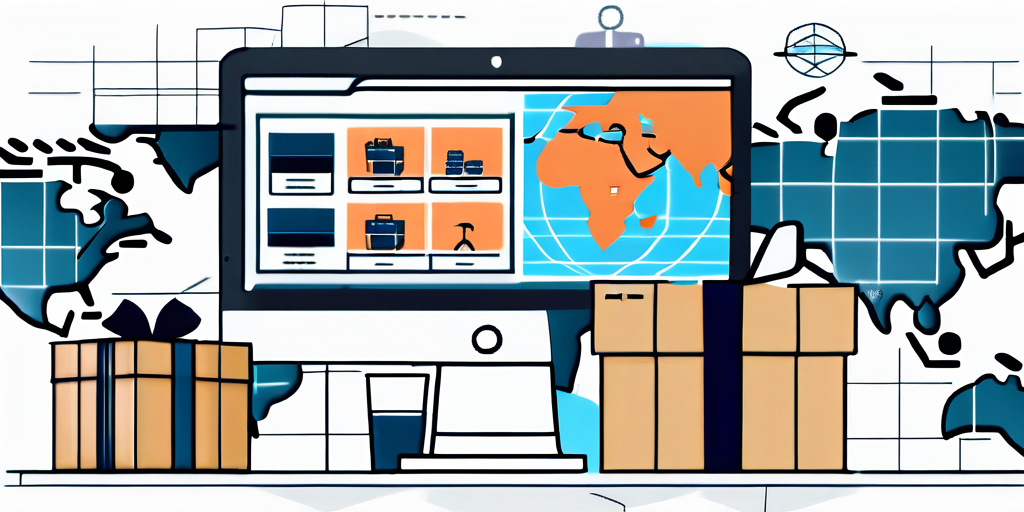In today’s digital age, starting an online business has become more accessible than ever before. One lucrative business model that has gained significant popularity is dropshipping. If you’re interested in exploring this business opportunity, this step-by-step guide will provide you with the necessary information to start your own dropshipping business successfully.
Understanding the Basics of Dropshipping
Before diving into the world of dropshipping, it’s essential to have a clear understanding of what it entails and how it works.

Dropshipping is a retail fulfillment method where the seller does not carry inventory. Instead, when a store sells a product, it purchases the item from a third-party supplier and has it shipped directly to the customer. This means that the seller never handles the product physically. This unique business model allows entrepreneurs to start an online store without worrying about inventory management or shipping logistics.
But what makes dropshipping such an appealing option for aspiring entrepreneurs? Let’s explore the benefits of starting a dropshipping business.
Benefits of a Dropshipping Business
There are several advantages to starting a dropshipping business:
- Low Startup Costs: Since you don’t need to invest in inventory upfront, the costs associated with starting a dropshipping business are significantly lower compared to traditional retail models. This means that you can allocate more resources towards marketing and growing your business.
- Location Independence: As long as you have an internet connection, you can run your dropshipping business from anywhere in the world. This flexibility allows you to work remotely and even travel while managing your store. Imagine sipping a pi��a colada on a tropical beach while fulfilling orders and growing your business. It’s the ultimate digital nomad dream!
- Wide Product Range: With dropshipping, you have the freedom to offer an extensive range of products without worrying about storage space or inventory limitations. Whether you want to sell trendy fashion accessories or niche pet products, the possibilities are endless. You can curate a product catalog that caters to your target audience’s needs and preferences.
- Reduced Risk: Since you only purchase a product once a customer places an order, you eliminate the risk of having unsold inventory or facing financial losses. This means that you can test different products and niches without the fear of being stuck with products that don’t sell. It’s a low-risk way to explore various markets and find what works best for your business.
Potential Challenges in Dropshipping
While dropshipping offers numerous benefits, it’s important to be aware of potential challenges that may arise:
- Supplier Issues: Finding reliable suppliers who can consistently meet customer demands can be a challenge. It’s crucial to thoroughly research and vet potential suppliers before partnering with them. Look for suppliers with a proven track record of timely order fulfillment and quality products. Building strong relationships with suppliers is key to ensuring a smooth and reliable supply chain.
- Inventory and Stockouts: Since you have no control over inventory, there may be instances where a supplier runs out of stock. This can lead to delays in order fulfillment and potentially dissatisfied customers. Proper communication and monitoring stock levels can help mitigate this issue. Regularly communicate with your suppliers to stay updated on stock availability and be prepared to find alternative suppliers if needed.
- Competition: Overcoming competition in the dropshipping industry can be tough. As dropshipping continues to gain popularity, more and more entrepreneurs are entering the market. Establishing a unique selling proposition and carefully selecting your niche can help you stand out from the crowd. Consider offering personalized customer experiences, exceptional customer service, or exclusive products to differentiate your business from competitors.
By understanding the benefits and challenges of dropshipping, you can make informed decisions and set realistic expectations for your business. With the right strategies and a strong work ethic, dropshipping can be a rewarding and profitable venture.
Planning Your Dropshipping Business
Before you start setting up your dropshipping store, it’s crucial to create a comprehensive plan. This plan will serve as your roadmap and guide you towards success.

But what exactly should be included in this plan? Let’s dive deeper into the key aspects of planning your dropshipping business.
Identifying Your Niche
When starting a dropshipping business, finding a profitable niche is key. Consider your interests, expertise, and market demand to identify a niche that excites you and has growth potential. Research market trends, competitor analysis, and customer behavior to make an informed decision.
Take the time to truly understand your target audience. What are their pain points? What are their desires and aspirations? By answering these questions, you can tailor your product offerings to meet their needs and stand out from the competition.
Analyzing Market Trends
Staying updated with market trends is vital to the success of your dropshipping business. Keep an eye on current market demands, emerging product trends, and customer preferences to ensure you consistently offer products that resonate with your target audience.
One effective way to stay ahead of the curve is by leveraging social media platforms. Monitor hashtags and engage in conversations related to your niche. This will not only help you understand what’s trending but also allow you to build relationships with potential customers.
Setting Business Goals
Setting clear and achievable business goals is essential for driving your dropshipping business forward. Define short-term and long-term goals that align with your vision and create a roadmap to track your progress. Goals can include increasing sales, expanding product offerings, or scaling your operations.
Remember, goals should be specific, measurable, attainable, relevant, and time-bound (SMART). This framework will help you stay focused and motivated as you work towards achieving your objectives.
As you embark on your dropshipping journey, keep in mind that planning is just the beginning. Execution and adaptability are equally important. Continuously monitor your progress, make adjustments when necessary, and always strive for improvement. With a well-thought-out plan and a proactive mindset, your dropshipping business has the potential to thrive in the competitive e-commerce landscape.
Setting Up Your Dropshipping Store
Once you have a solid plan in place, it’s time to set up your dropshipping store. This involves choosing the right platform, designing an appealing online store, and ensuring seamless payment methods.

Choosing the Right Platform
When selecting a platform for your dropshipping store, consider factors such as ease of use, scalability, available features, and pricing. Popular options include Shopify, WooCommerce, and BigCommerce. Research different platforms and choose the one that best aligns with your business needs.
Shopify, for example, is known for its user-friendly interface and extensive app store. It offers a range of themes and templates that can be customized to reflect your brand’s unique identity. WooCommerce, on the other hand, is a powerful plugin for WordPress websites, providing flexibility and control over your online store. BigCommerce is a robust platform that offers built-in features like inventory management and marketing tools, making it a great choice for growing businesses.
Designing Your Online Store
The design of your online store plays a crucial role in attracting and retaining customers. Opt for clean and user-friendly designs that align with your brand. Make sure your store is mobile-responsive, as an increasing number of customers shop using their smartphones or tablets.
Consider using high-quality product images and engaging product descriptions to entice customers. Implement a clear and intuitive navigation system, allowing visitors to easily find what they’re looking for. Don’t forget to create a visually appealing homepage that showcases your best-selling products or current promotions.
Setting Up Payment Methods
Offering secure and convenient payment options is vital to ensuring a smooth shopping experience for your customers. Integrate trusted payment gateways such as PayPal, Stripe, or Braintree into your store to provide multiple options for your customers to complete their transactions.
PayPal, for instance, is a widely recognized and trusted payment gateway that allows customers to make purchases using their PayPal account or credit card. Stripe offers seamless integration and supports various payment methods, including Apple Pay and Google Pay. Braintree, owned by PayPal, provides a secure and flexible payment solution that allows customers to pay with their preferred method, whether it’s a credit card or a digital wallet.
Remember to clearly communicate your accepted payment methods and any security measures you have in place to build trust with your customers. Offering a variety of payment options can help cater to different customer preferences and increase your conversion rates.
Finding and Partnering with Suppliers
Your choice of suppliers significantly impacts the success of your dropshipping business. Building strong relationships with reliable suppliers is crucial for timely order fulfillment and maintaining high product quality. Here’s how you can find and partner with suppliers:
How to Find Reliable Suppliers
Start your search for suppliers by attending industry trade shows, reaching out to manufacturers directly, or using online supplier directories. thoroughly vet potential suppliers by analyzing their product quality, reputation, shipping capabilities, and customer reviews. Consider testing samples from potential suppliers before making a final decision.
Building Relationships with Suppliers
Once you’ve identified reliable suppliers, focus on building strong relationships with them. Effective communication, mutual trust, and transparent expectations are key to a successful partnership. Regularly discussing inventory levels, order fulfillment processes, and customer feedback helps maintain a healthy supplier relationship.
Negotiating Terms with Suppliers
As you establish partnerships with suppliers, it’s important to negotiate favorable terms. Discuss pricing, minimum order quantities, shipping arrangements, and potential discounts to ensure a mutually beneficial agreement. Maintaining a positive working relationship with your suppliers opens doors for growth and potential cost savings.
By following this step-by-step guide, you’ll be well on your way to starting a successful dropshipping business. Remember, thorough planning, market research, and attention to detail are key to stand out from the competition and achieve long-term success. Best of luck in your entrepreneurial journey!


